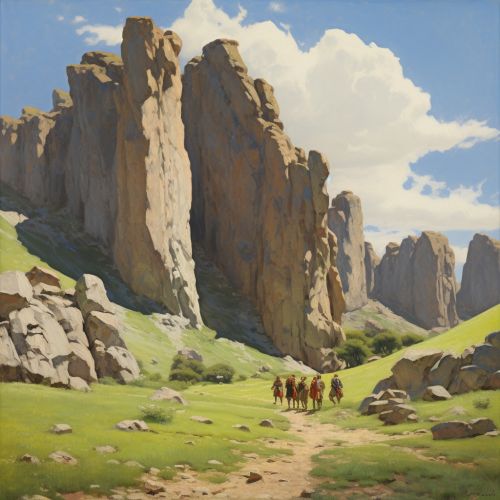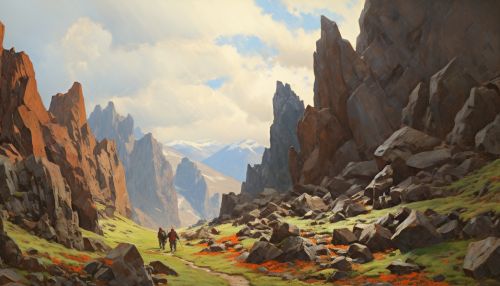Jotnar
Origins and Mythology
The Jotnar, also known as the Jotuns or giants, are a race of beings in Norse mythology. They are often depicted as inhumanly large, monstrous creatures, but their physical appearance can vary greatly. Some are described as beautiful, while others are said to have multiple heads or other monstrous features. They are known to inhabit the land of Jotunheim, one of the nine worlds in Norse cosmology.
The Jotnar are often portrayed as enemies of the gods, particularly the Aesir, the main pantheon of Norse deities. However, the relationship between the Jotnar and the gods is complex and multifaceted. Many of the gods are related to the Jotnar by blood or marriage, and the giants often play crucial roles in the gods' stories.


Classification
In Norse mythology, the Jotnar are often divided into various subgroups. The most common division is between the frost giants or Hrimthurssar, and the fire giants or Eldjotnar. The frost giants are said to be the descendants of Ymir, the primordial giant from whom the world was created. The fire giants, on the other hand, are associated with the realm of Muspelheim, the world of fire.
Another classification of the Jotnar is based on their relationship with the gods. The Thursar are often seen as the enemies of the gods, while the Risi are neutral, and the Bergrisi are often allied with the gods.
Notable Jotnar
There are many notable Jotnar in Norse mythology. Some of the most famous include:
- Ymir: The first of all beings in the Norse creation myth. He was a hermaphroditic giant whose body was used to create the world.
- Loki: A trickster god who is often associated with the Jotnar. He is the son of two giants and is known for his cunning and deceit.
- Fenrir: The monstrous wolf son of Loki, who is prophesied to kill the god Odin during the events of Ragnarok.
- Jormungandr: The Midgard Serpent, another child of Loki, who encircles the world and is destined to fight the god Thor at Ragnarok.
- Hel: The goddess of the underworld, also a child of Loki. She rules over the realm of the dead.
- Thrym: A giant who steals Thor's hammer, Mjolnir, and demands the goddess Freyja as his bride in return.
- Surt: A fire giant who will set the world ablaze during Ragnarok.
Role in Norse Mythology
The Jotnar play a significant role in Norse mythology. They are often portrayed as antagonists in the myths, posing threats to the gods or challenging them in some way. However, they are not purely evil beings. Many of the myths involve the gods interacting with the Jotnar in more complex ways, such as through marriages or alliances.
The Jotnar are also crucial to the Norse cosmology. The world was created from the body of the giant Ymir, and many of the natural features of the world, such as mountains and rivers, are said to be the remains of slain giants.
Jotnar and Ragnarok
The Jotnar are deeply involved in the prophecy of Ragnarok, the end of the world in Norse mythology. During Ragnarok, many of the Jotnar will fight against the gods. The fire giant Surt will set the world on fire, and the monstrous children of Loki, Fenrir and Jormungandr, will kill the gods Odin and Thor.
Despite their destructive role in Ragnarok, the Jotnar are also part of the new world that will arise after the apocalypse. It is said that two giants, Líf and Lífþrasir, will survive Ragnarok and repopulate the world.
